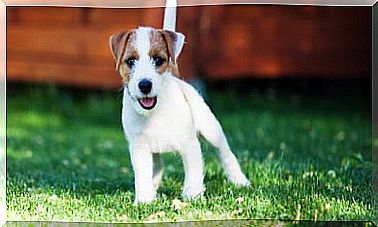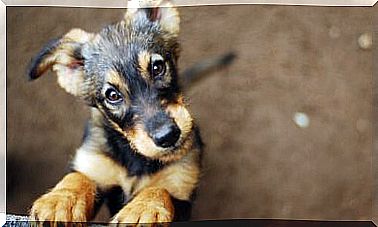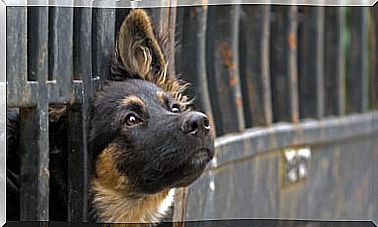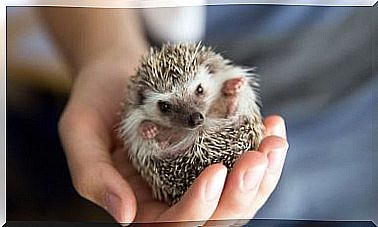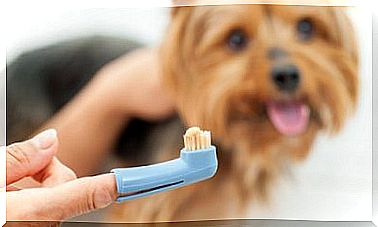Ankole-Watusi: Characteristics, Reproduction And Feeding
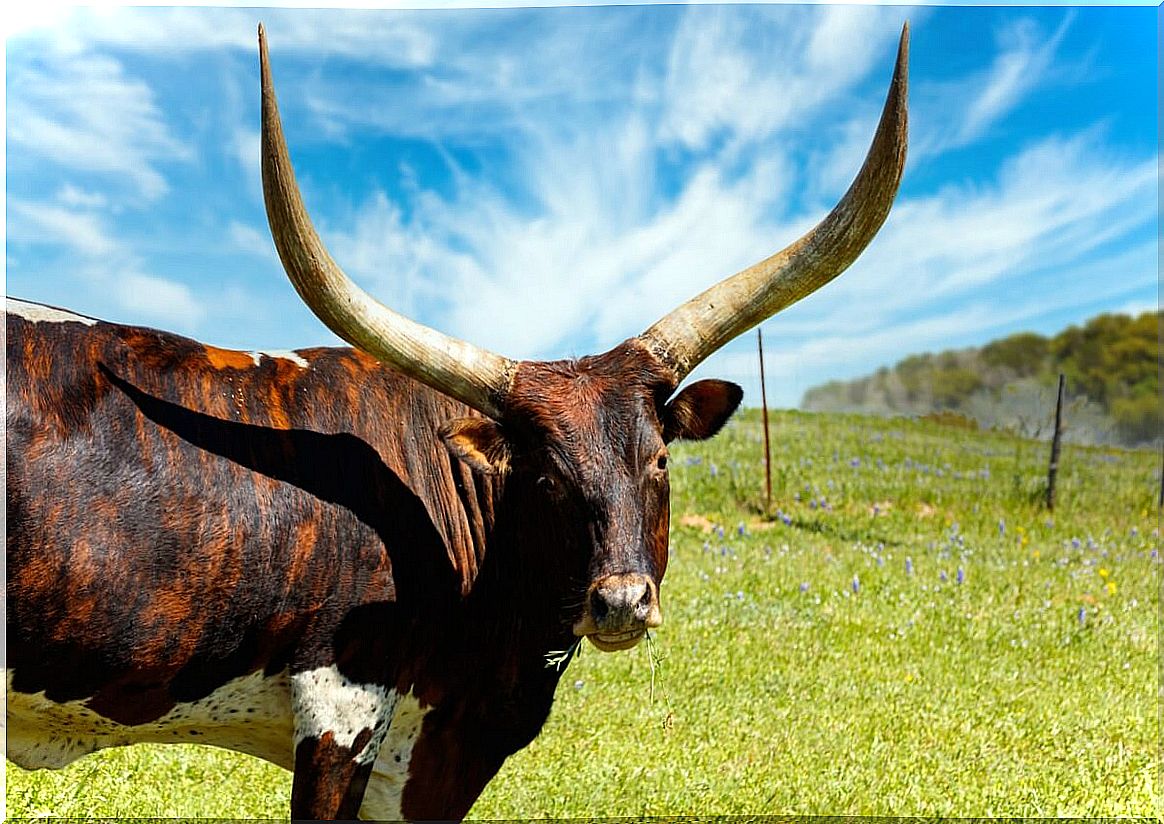
The Ankole-Watusi cattle breed (Bos primigenius indicus ) originated in Africa and its ancestors date back to the time of the pyramids. Since the past, these artiodactyl mammals are really prized as dairy cows.
Such is its importance that the Ankole-Watusi have a day of their own, March 7. If you want to know other interesting facts about this breed of cow, do not miss what is told below.
Characteristics of the Ankole-Watusi breed
Although this bovine breed is called Ankole-Watusi, it is also known as watusi. On a scientific level, it belongs to the Bos primigenius species and has a series of distinctive characteristics, which we will tell you about in the following lines.
1. Medium-sized bovine breed
From the African continent, Ankole-Watusi cattle are found in different countries. In particular, its population centers are close to territories with large lakes, such as Burundi, Rwanda, Tanzania or the Democratic Republic of the Congo.
In relation to other bovine breeds, those specimens that make up the Ankole-Watusi breed are medium in size. Even so, the females reach a weight of around 230-250 kilograms and the males level between 540 and 730 kilos. It goes without saying that we are not dealing with precisely small animals.
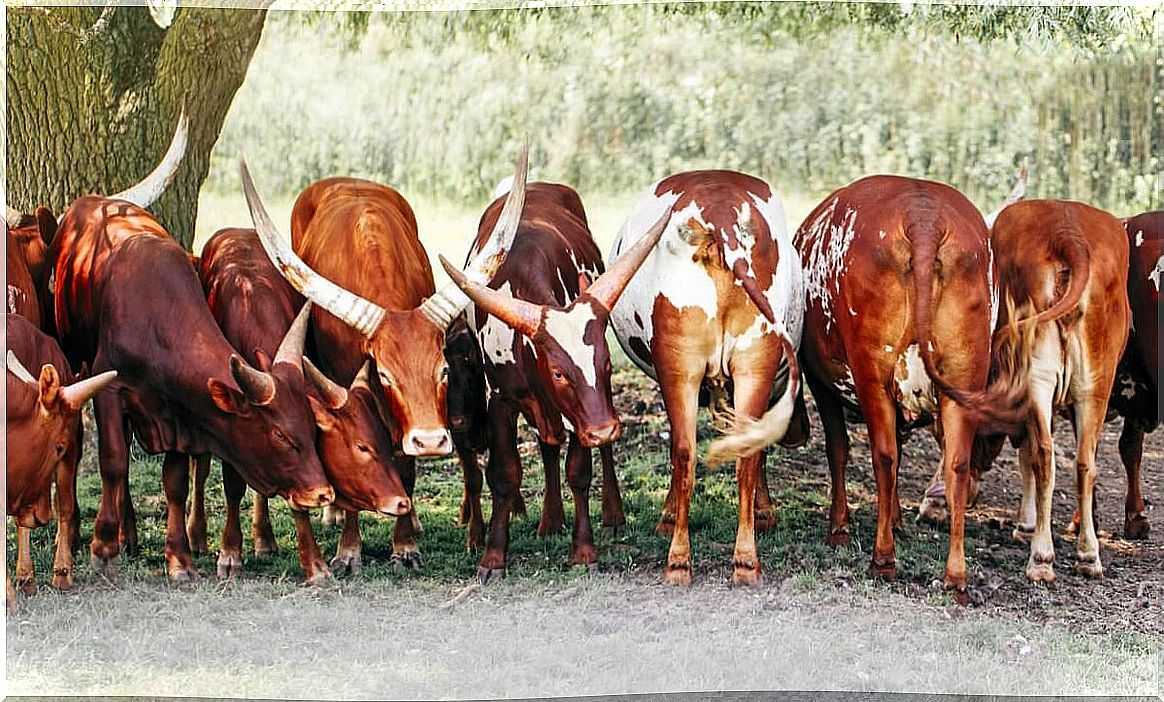
2. The calves stay together
Calves weigh between 14-23 kilograms at birth, but their growth rate is slow. Throughout the day, the calves are watched over by a caretaker cow, which protects them.
3. Adults protect young
One detail, which is reminiscent of the behavior of lionesses, is that the cows are responsible for the protection of the young. During the night, the whole herd sleeps together and the calves are left in the middle, surrounded by the adults. In this way, they can protect them with their horns from predators or other dangers.
4. Color patterns of the Ankole-Watusi breed
As for the color of the Ankole-Watusi breed, the brown tone predominates over others. This color is accompanied by different shades within that range, but nevertheless, some specimens have other colors, such as white or black.
5. Adaptations
At the genetic level, this bovine breed has developed different evolutionary adaptations in response to the resource-poor environment in which it inhabits. The most significant features will be indicated below:
- Adaptation to heat.
- Resistance to different diseases.
- Use of low quality forages.
- Drought tolerance.
6. Do you know its variants?
When it comes to differentiating between the diversity of the specimens, location is an important aid. Currently, there are different “strains” or variants within this breed:
- Bahema. In North Kivu, these bovids have the smallest horns and show large varieties of color.
- Bashi. This variant is present in the southern region of Kivu, specifically near Lake Kivu.
- Kigezi. Difficult to find, this strain is found in the Kigezi Hills and shares many similarities with the Bahema variant.
- Tutsi. Located in Lake Tanganyika, it stands out for having the longest horns and being reddish in color.
At the time of distinguishing adult males from females, a marked dimorphism is observed. In particular, males have a hump that females lack, as well as a more pronounced antler.
Reproduction
The breeding of Ankole cattle is selective, since the objective is to obtain good specimens. The main function of the facilities that raise these bovids is the production of large quantities of milk as well as quality meat.
Factors of interest in cow selection
When it comes to breeding cattle, they tend to look for “better quality” specimens. This means that the strongest ones, that produce more milk or of greater resistance are chosen. Thus, among the traits that are considered relevant when choosing a breeding cow, the following stand out:
- Beauty of the specimen: the essential feature is the presence of the chosen animal. This trait includes factors such as height – including horns, white and with good shape – and that the specimens are large with long legs.
- Character of the specimen: if the animal has a calm temperament, it will be easier to treat than other individuals of the same breed.
- Milk production: it is essential to select specimens that produce large quantities of good quality milk.
- Color Patterns: Although they can show color patterns, breeders typically look for uniformity in the tone of the cattle. The «Bihogo» or dark brown tone predominates.
In this way, breeders consider that their prestige increases if they have specimens with these characteristics. Thus, they indicate the care they devote to their herds and the price of their specimens increases in the market.
Difficulties faced by this breed
Currently, a decrease in the breed has been observed in the last 10 years. Among the factors that are negatively affecting the breed are the following:
- Decrease in milk production.
- Insufficient patches of land for the size of these cows.
- Restricted movement: by making it impossible for these animals to move freely, you are negatively influencing the population dynamics of the Ankole breed.
- Investment need: it seems that these breeds are losing investors and customers who are looking for “exotic cows”.
Feeding of the Ankole-Watusi breed
Regarding their diet, the Ankole-Watusi stand out for their survival abilities. They can be sustained in conditions where food is restricted or scarce, where water and forage are not abundant. In this way, these bovids have been able to survive for centuries in Africa.

In short, the Ankole-Watusi bovine breed has been preserved and adored by different African countries. Currently, it inhabits various continents, such as the American or the Asian. Although it is perfectly adapted to low grazing regions, its populations decrease and, therefore, it is convenient to devote attention, protection and care to this breed.


